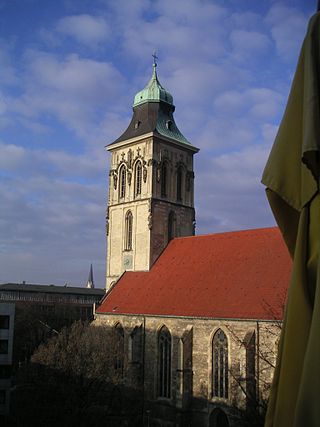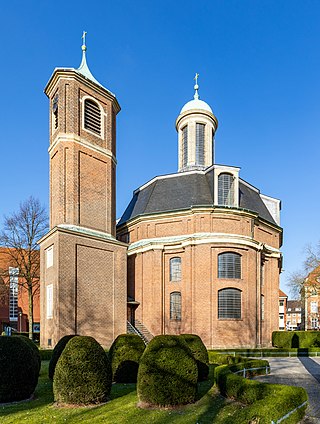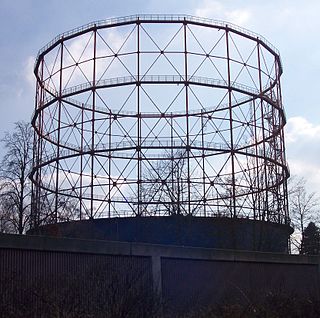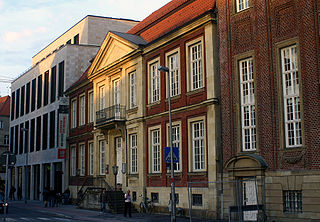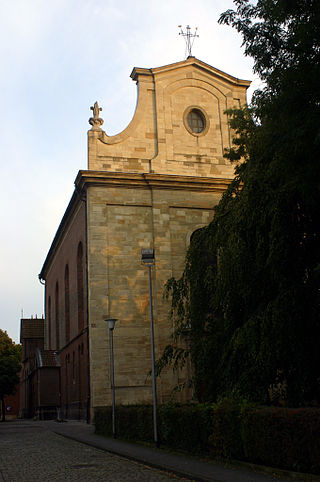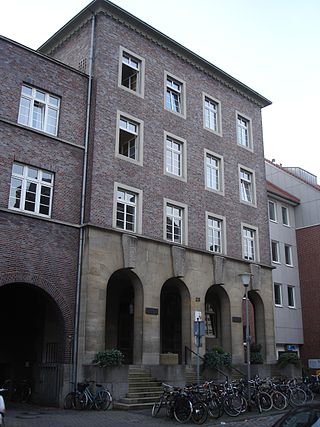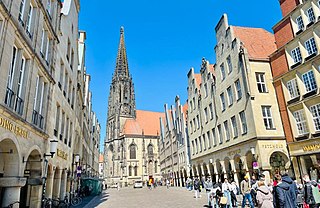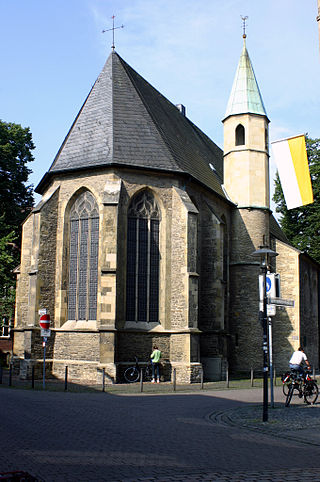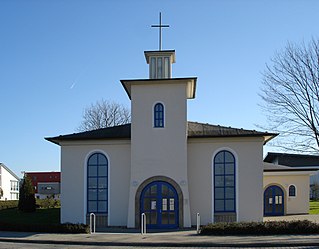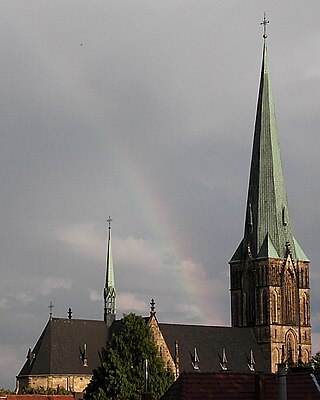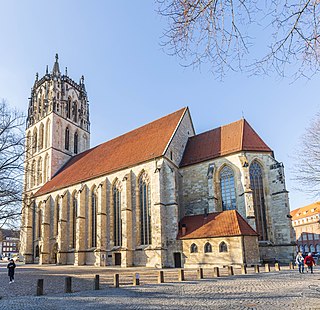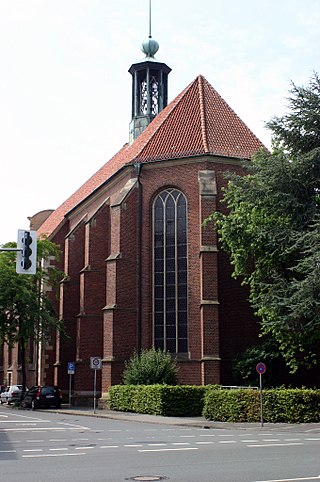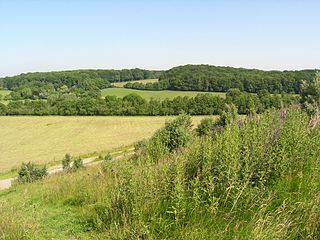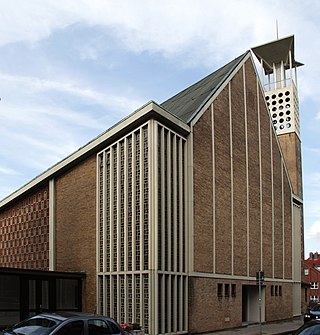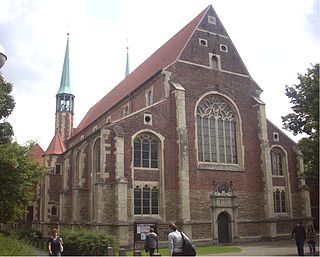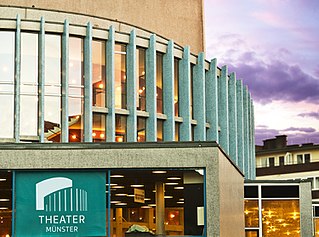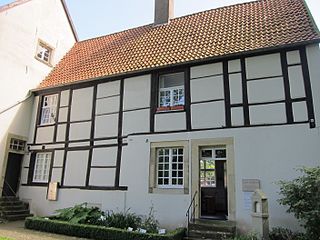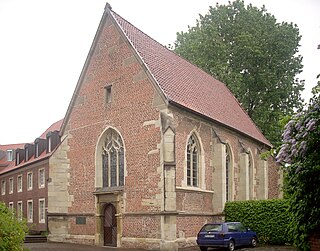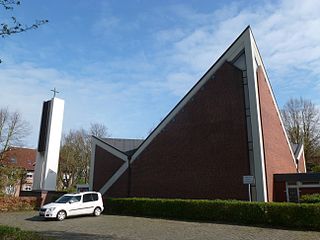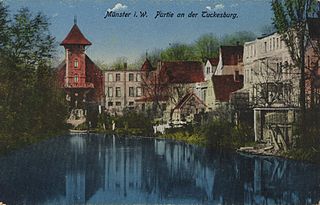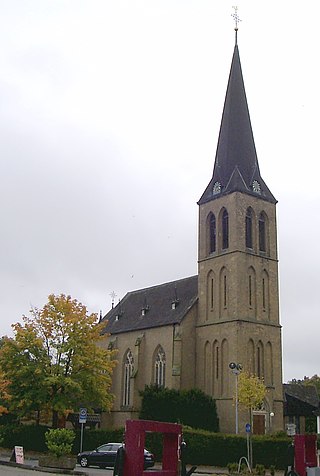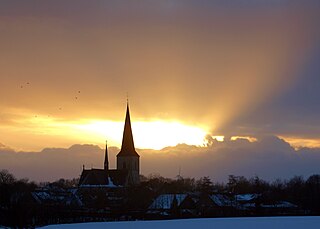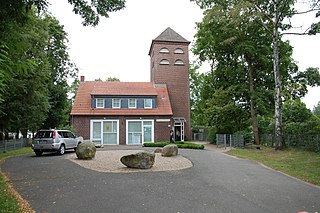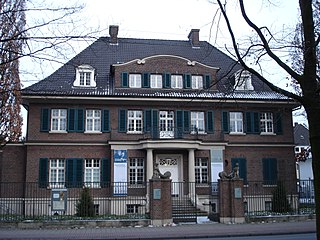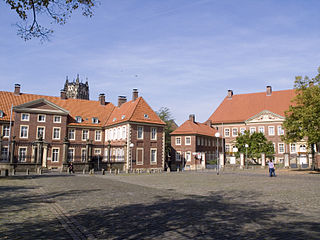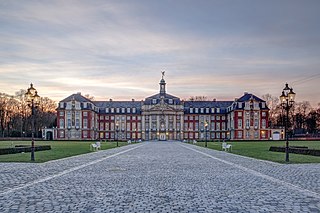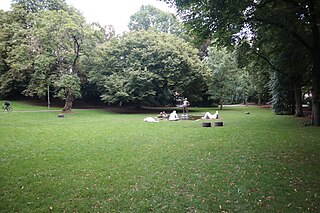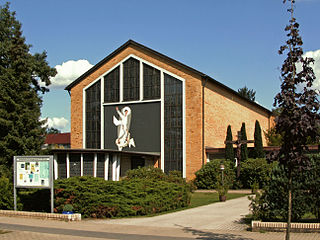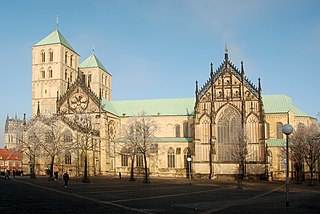34 Sights in Münster, Germany (with Map and Images)
Legend
Welcome to your journey through the most beautiful sights in Münster, Germany! Whether you want to discover the city's historical treasures or experience its modern highlights, you'll find everything your heart desires here. Be inspired by our selection and plan your unforgettable adventure in Münster. Dive into the diversity of this fascinating city and discover everything it has to offer.
Sightseeing Tours in Münster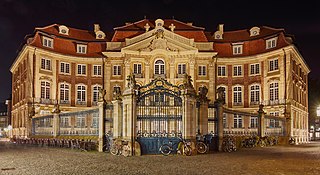
The Erbdrostenhof is a three-wing late Baroque palace in Münster, North-Rhine-Westphalia, Germany. It is located on Salzstraße. It was designed by Johann Conrad Schlaun for Adolf Heidenreich Freiherr Droste zu Vischering, Erbdrost of Münster and built between 1753 and 1757. Johann Christoph Manskirch produced sculptures for the building, whilst Nikolaus Loder painted frescoes in the interior - the latter were damaged during World War Two and restored between 1965 and 1967 by the Austrian restorer Paul Reckendorfer.
2. Martinikirche
St. Martini is one of the oldest Roman Catholic sacred buildings in the Westphalian Minster under the patronage of St. Martin and was built around the 1180s. It is located on the corner of Martinistraße and Neubrückenstraße near the theatre.
3. Clemenskirche
The Clemenskirche in the Westphalian city of Münster is a baroque monastery and hospital church built according to plans by Johann Conrad Schlaun between 1745 and 1753 for the Brothers of Mercy. The monastery was dissolved in 1811.
4. Gasometer
The Gasometer in Münster is a disused natural gas storage facility of Stadtwerke Münster, which has helped shape the silhouette of Münster's cityscape since 1954 and has been in continuous operation for five decades.
5. Picassomuseum
The Pablo Picasso Münster Art Museum was opened in 2000 in Münster, Westphalia, and houses lithographs and other holdings in various artistic techniques and from different creative periods of Pablo Picasso with over 800 exhibits.
6. Aegidiikirche
St. Aegidii, usually called Aegidiikirche, is a Roman Catholic church in the old town of Münster. Originally a Capuchin church, it took over its function and the Ägidius patronage after the demolition of the old Aegidii parish church. The monastery church, which was renovated by Johann Conrad Schlaun between 1724 and 1728, survived the bombing of Münster's city centre in the Second World War relatively unscathed.
7. Apostelkirche
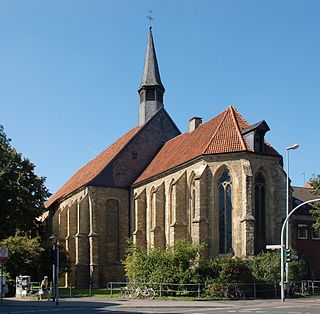
The Apostle Church in Münster is the main Protestant church in the city. It is located in the northern part of the historic old town, about halfway between St. Lamberti and the promenade belt. It was built as a monastery church of the Franciscans and is the first Gothic church building in Münster. From 1517 the Apostle Church was the monastery church of the Minorite monastery.
8. Deutsches Studentenheim
The German Student Dormitory (DSH), also known as Breul and formerly Burse, is one of the oldest student dormitories in the Westphalian university city of Münster, Breul 23. It was built in 1928 according to plans by Hans Ostermann, and since March 17, 1986, the façade of the building has been a listed building.
9. St. Lamberti
St Lambert's Church is a Roman Catholic church building in Münster (Westphalia) in Germany, dedicated to Lambert of Maastricht. Its present building is the most significant example of Westphalian late Gothic architecture. It lies on the north side of the Prinzipalmarkt in the city centre. Until the early 20th century, the Roggenmarkt contained the Drubbels district of housing. To the church's east lies the Alte Fischmarkt and the Salzstraße, whilst between the church and the Salzstraße is the Lambertikirchplatz with the Lambertibrunnen.
10. St. Servatii
St. Servatii in the Westphalian city of Münster, under the patronage and named after St. Servatius of Tongeren, is a historic church that dates back to around 1230 in its present form. This makes it one of the oldest churches in the city. For more than 700 years it was an independent parish until it became part of the Lamberti community again.
11. Friedenskastanie
The Loddenheide is a 0.9 km² commercial and industrial area in the southeast of Münster in Westphalia. It was used for military purposes until 1993. In 1996, the development of the site into today's Münster-Loddenheide industrial park began, and marketing began in 1998. The special feature is the Peace Park with the Peace Chapel and the Peace Chestnut planted by the Dalai Lama in 1998.
12. Herz-Jesu-Kirche
The Catholic parish church Herz-Jesu-Kirche is located in the southeast of Münster in Westphalia, just outside the inner city ring, in the Herz-Jesu district named after it. The portal façade faces Wolbecker Straße.
13. Überwasserkirche
Überwasserkirche is the common name of a Gothic hall church in Münster, North Rhine-Westphalia, Germany. It is a Liebfrauenkirche, dedicated to St. Mary. Officially St. Marien Überwasser, it is also called Liebfrauen-Überwasser. The name literally means "church beyond the water" and describes the location as on the other side of the Aa river, looking from the Münster Cathedral. It was inaugurated as part of an educational Stift in 1040, which later became the University of Münster.
14. Evangelische Universitätskirche
The Observantenkirche is a church building in the old town of Münster on the corner of Schlaunstraße, Rosenstraße. Until the abolition of the monastery in 1811, it was the monastery church of the Franciscan Observants. The Observant Church is the property of the state of North Rhine-Westphalia and is today the Protestant University Church and Concert Church of the Protestant Theological Faculty of the University of Münster.
15. Vorbergshügel
The Vorbergshügel is the highest and at the same time most famous hill of the Nienberg Heights, which occupy the approximately 4 km long southeast of the Altenberg Ridge in the Münster district of Nienberge and northwest of it. The partial chain of hills has its second highest point in the neighbouring Mühlenberg immediately to the northwest.
16. Matthäuskirche
St. Matthew's Church is a Protestant church in the southern quarter of the city of Münster at Antoniusstraße 36 in the middle of a residential area. It belongs to the Evangelical Church of Westphalia and is named after the evangelist Matthew.
17. St. Petri
St. Petri, also Petrikirche, is a Catholic church in Münster, Germany. As the church of the former Jesuit College, St. Peter's Church is the nucleus of the University of Münster. It is located not far from the cathedral in the university grounds between the Fürstenberghaus, the Faculty of Law and the Faculty of Catholic Theology on the Aa and today serves as the church of the Catholic Student and University Community of Münster (KSHG) and as the school church of the Paulinum Grammar School. Because of the good acoustics, the church is considered a preferred space for sacred concerts; in addition, St. Peter's Church is very much appreciated as a wedding church.
18. Archäologisches Museum
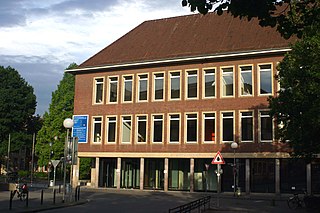
The Archaeological Museum of the University of Münster in the "Fürstenberghaus" on the Cathedral Square in Münster primarily serves the Institute of Classical Archaeology and Early Christian Archaeology of the University for teaching and research purposes. In addition, it offers the public an insight into the subject area of archaeology and shows working methods and research findings. The focus of the exhibition is on exhibits from Greek antiquity.
19. Theater Münster
Theater Münster is a municipal theatre in Münster, North Rhine-Westphalia, Germany, for plays and music theatre. When it opened in 1956 it was regarded as the first new theatre building in Germany after World War II. It integrates some ruins of the former theatre and musical school destroyed in the war.
20. Lepramuseum
The Leprosy Museum in the Kinderhaus district of the Westphalian city of Münster is the only museum in Germany that deals with the history, spread and fight against leprosy. In addition, it offers special and travelling exhibitions, colloquia, lectures, publications and teaching materials on this topic.
21. Johanneskapelle
The St. Johannes Chapel in Münster is a small Gothic church building on the Breul in the northwest of the historic old town. It belongs to the Protestant Apostle Church congregation and is used by various groups and denominations for divine services in a special form.
22. Martin-Luther-Kirche
The Martin Luther Church is a Protestant church building in Münster in the district of Mecklenbeck, which was built between 1966 and 1967 according to designs by the architect Olaf Andreas Gulbransson.
23. St. Stephanus
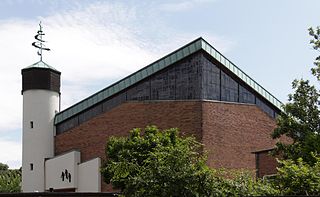
St. Stephanus is a Catholic church in Münster, Germany. It is a branch church of the Catholic parish of St. Liudger. It was built from 1963 onwards according to plans by the architect Hans Schilling (Cologne) and consecrated on 11 December 1965.
24. Tuckesburg
The Tuckesburg is located on a small hill on the edge of the old zoo in Münster between Promenade, Himmelreichallee and Hüfferstraße. It was the home of Hermann Landois, built in 1892, where he lived from 17 March 1892 with his monkey "Lehmann" until his death. He had it built according to his ideas right next to the Zoological Garden he founded. There he called himself "Earl Tucks".
25. St. Ludgerus Albachten
The Catholic Church of St. Ludgerus is a listed church building in Albachten, a district in the southwestern part of the West district of Münster in North Rhine-Westphalia, Germany. The St. Ludgerus Church is a branch church of the Catholic parish of St. Liudger.
26. Sankt Sebastian
The Catholic Church of St. Sebastian is a listed church building in Amelsbüren, a district of Münster (North Rhine-Westphalia). The church and parish belong with St. Clemens and St. Marien to the parish of St. Clemens in the Diocese of Münster.
27. Hiltruper Museum
The Hiltrup Museum is a Westphalian museum of local history in the Hiltrup district of Münster, Germany. It was founded in 1984 on the initiative of the Heimatfreunde Hiltrup local history association.
28. Villa ten Hompel
The Villa ten Hompel is a memorial site for offenses committed by the police and government administration during the National Socialist period in the city of Münster, located in the German state of North Rhine-Westphalia.
29. Kettelersche Kurie
The Ketteler Curia on the Cathedral Square in Münster was built between 1712 and 1716 by the master builder Lambert Friedrich Corfey. The builder was Vicar General Nikolaus Hermann von Ketteler zu Harkotten, who decided in 1711 to build a curia on his property. The building still belongs to the Episcopal General Vicariate and is used as a residential building and archive. In the immediate vicinity of the Episcopal Palace, it forms a magnificent ensemble in the cathedral courtyard.
30. Fürstbischöfliches Schloss
Schloss Münster, officially Fürstbischöfliches Schloss Münster, is the schloss built as the residence of the prince-bishop of Münster, modern-day North Rhine-Westphalia, Germany. It was built between 1767 and 1787 in baroque style as a mansion for the last but one prince-bishop Maximilian Friedrich von Königsegg-Rothenfels. The architect was Johann Conrad Schlaun. Since 1954 it has been the seat and landmark of the University of Münster. The castle is built from the typical Baumberger sandstone of Münster.
31. Kreuzschanze
The Kreuzschanze is a green area and former ski jump on the northern edge of the city center of Münster in Westphalia on the promenade at the level of the former Kreuztor. It was built together with the redoubts at the Hörstertor and Servatiitor between 1648 and 1660 and is the only one that has been preserved in its full dimensions. Originally, it was additionally protected by a moat, which is still preserved in the form of two small ponds. Directly southeast of the redoubt is the Buddenturm as the last surviving tower of the former city fortifications. A little west of the Kreuzschanze on Kleimannstraße stands a batardeau.
32. St. Michael
Sankt Michael is the Roman Catholic church in Münster, a town in the district of Heidekreis in Lower Saxony, Germany. It is a parish church. Their parish belongs to the deanery of Celle of the Diocese of Hildesheim, and is used by both the military and the civilian community. The church, named after the Archangel Michael, is located at Bahnhofstraße 27.
33. St.-Paulus-Dom
St. Paul's Cathedral is a Roman Catholic church in Münster under the patronage of the Apostle Paul. The cathedral of the Diocese of Münster is one of the most important church buildings in Münster and, along with the historic town hall, is one of the city's landmarks. The cathedral is administered by the cathedral chapter of Münster.
34. Geomuseum
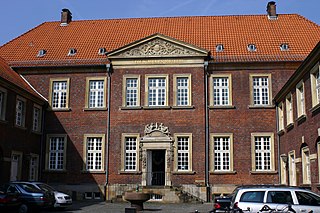
Since its opening in 1824, the Geomuseum of the University of Münster in Münster, Westphalia, which was called the Geological and Paleontological Museum until 2007, has been home to numerous fossils from a wide variety of geological eras in its exhibition. Since it was the only museum in Westphalia with a noteworthy collection of fossils for more than 150 years, many extraordinary finds came to Münster, which are exhibited in the museum and stored in the archive. In many cases, the sites are no longer accessible or exploited, so that some exhibits have considerable scientific value.
Wikipedia: Geologisch-Paläontologisches Museum Münster (DE), Website
Share
How likely are you to recommend us?
Disclaimer Please be aware of your surroundings and do not enter private property. We are not liable for any damages that occur during the tours.
